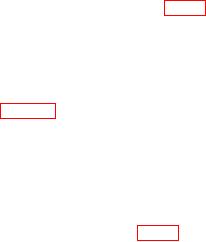
TM 3-6665-268-10
13. Biological Agent Sampling
is shipped to the laboratory.
Ship the readings along
with the sample.
If the presence of biological agent is suspected, collect
as many biological agent samples as may be required.
15. Contaminated Objects
Mark them for identification with date, time, location, and
sample number.
a. Use a soil collection bag to collect small
contaminated objects, such as fragments or small pieces
a. To collect a water sample:
of aerosol dissemination equipment, spray guns, vials,
(1) Remove the seal and cap (red) from an
compressed-air-type bomb or shells, small dead animals
empty sterile vial.
or fish.
(2) Dip the vial just below the water surface
b. Fold down the top of the bag three times. Seal
and fill the vial.
the bag with the attached tie straps.
(3) Recap and reseal the vial.
c. Mark a shipping tag to identify the sample and
(4) Rinse the outside of the vial with
attach it with a tie to the bag.
uncontaminated water, if available.
d. Place the sample in the soil sampling kit.
(5) Mark a shipping tag to identify the sample
and attach it to the vial with a tie.
16. Processing Soil Sample
(6) Place the vial in the soil sampling kit.
b. To collect a sample on surfaces:
To process a soil sample:
(1) Remove the seal and cap (blue) from the
vial containing holding solution.
a. Untie and unfold the top of the soil extraction
(2) Dip the cotton tip of an applicator into the
bag.
liquid. Remove the applicator and recap the vial.
b. Remove the seal and cap from an extraction
(3) Rub and roll the wetted applicator tip over
fluid bottle.
the suspected surface covering an area of approximately
c. Carefully pour the extraction fluid into the soil
36 square inches.
extraction bag leaving the solid drying agent in the
(4) Open the vial, insert the cotton tip of the
bottle.
applicator, and break off the end that extends from the
d. Reseal the top of the soil extraction bag.
vial.
e. Hold the seals at the top and bottom of the bag
(5) Recap and reseal the vial.
in one hand. With the other hand, gently knead the
(6) Mark a shipping tag to identify the sample
contents the bag or approximately 3 minutes to extract
and attach it with a tie (7, fig. 2) to the vial.
any chemical agent that may be in the soil sample. Take
(7) Place the vial in the soil sampling kit.
care not to squeeze out any of the contents.
f. Remove the clip. Unfold the bottom of the bag
14. Radiological Soil Sampling
and insert it in the extraction fluid bottle.
g. Gently squeeze the fluid from the bag into the
To collect a radiological sample from a hot spot
bottle. Take care not to force any soil into the bottle.
(para 11b):
h. Remove the bag from the bottle and reseal the
a. Using the scoop, transfer a thin layer of soil, 2 or
bottom of the bag.
3 inches square and 1/4 - to 3/8 -inch deep, to a soil
i. Recap the extraction fluid bottle tightly and
collection bag. (Fill the bag approximately half full.)
reseal the bottle with the pressure-sensitive tape. Mark
b. Fold down the top of the bag three times. Seal
the bottle to identify the soil extract with the soil sample.
the bag with the attached tie straps.
j. Place the soil extraction bag in a soil collection
c. Mark a shipping tag to identify the sample and
bag and seal the bag with the attached tie straps.
attach it with a tie (7, fig. 2) to the bag.
k. Place the processed soil sample and the
d. Place the sample in the soil kit. Then place the
extraction fluid bottle in the soil sampling kit.
soil kit in a suitable shielded container as soon as
l. Forward both the soil extract and the soil sample
possible.
to the General Chemical Laboratory for test.
e. Record hourly meter readings until the sample
7

